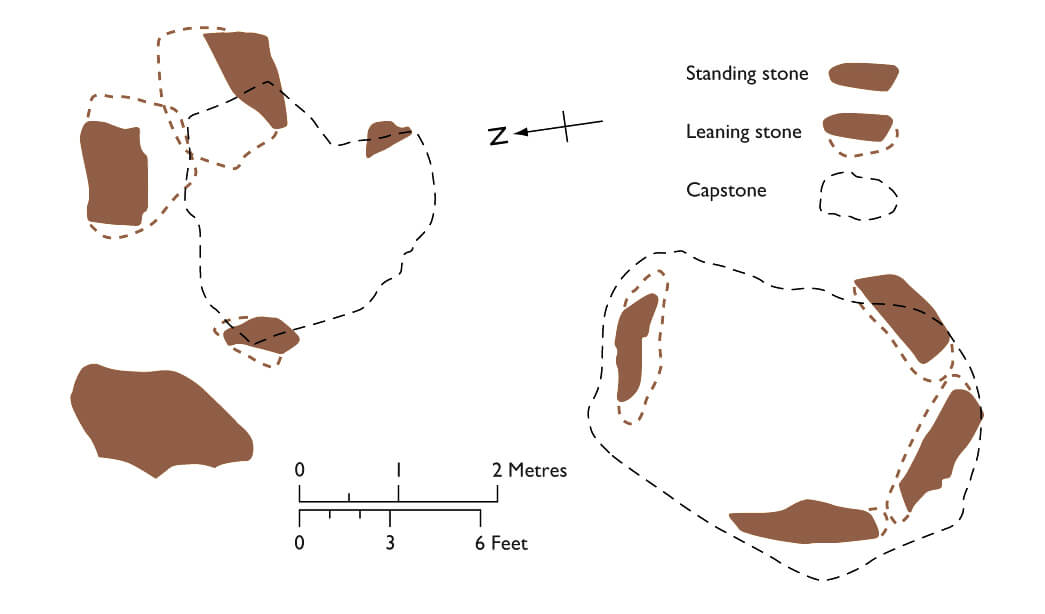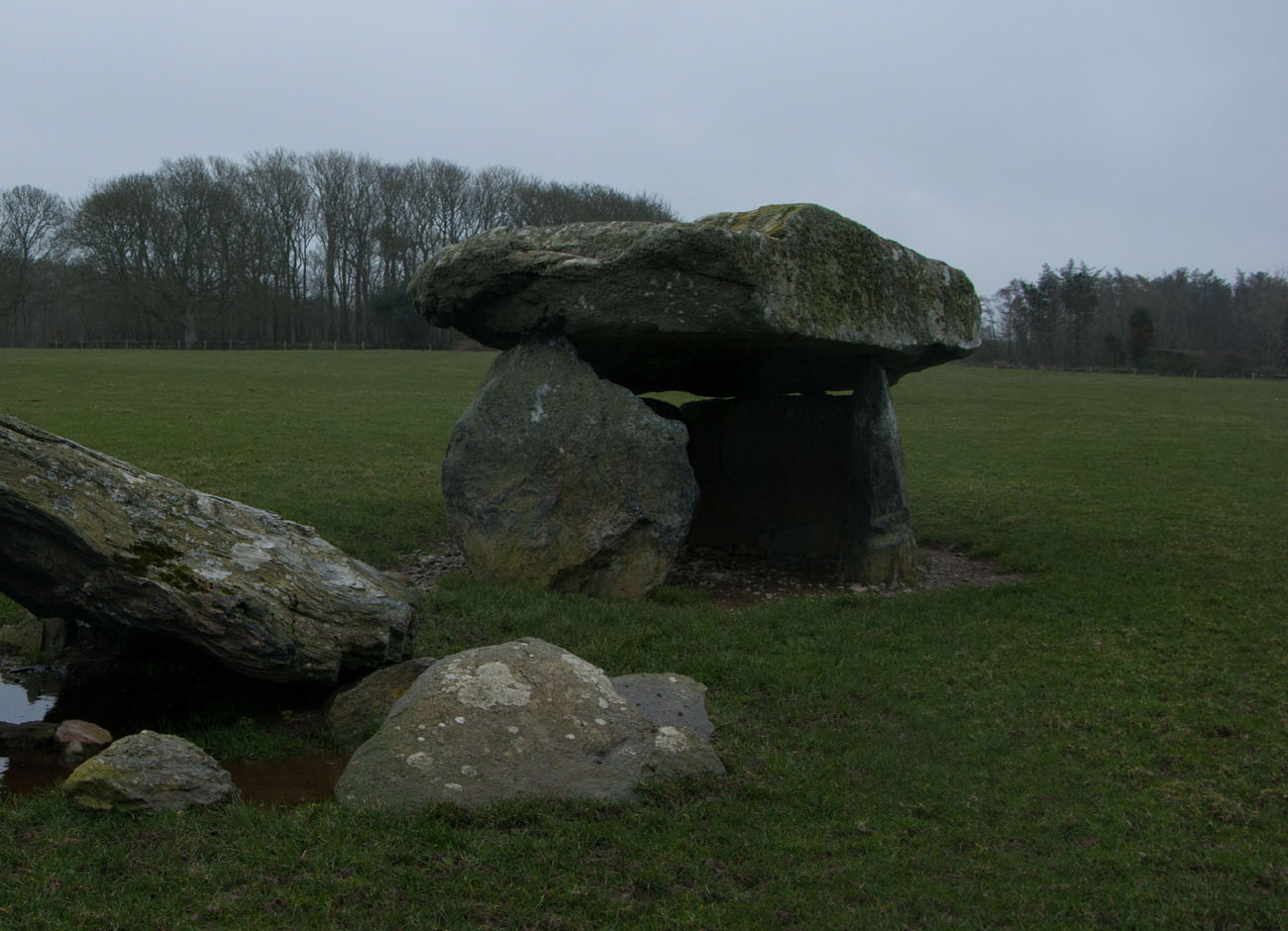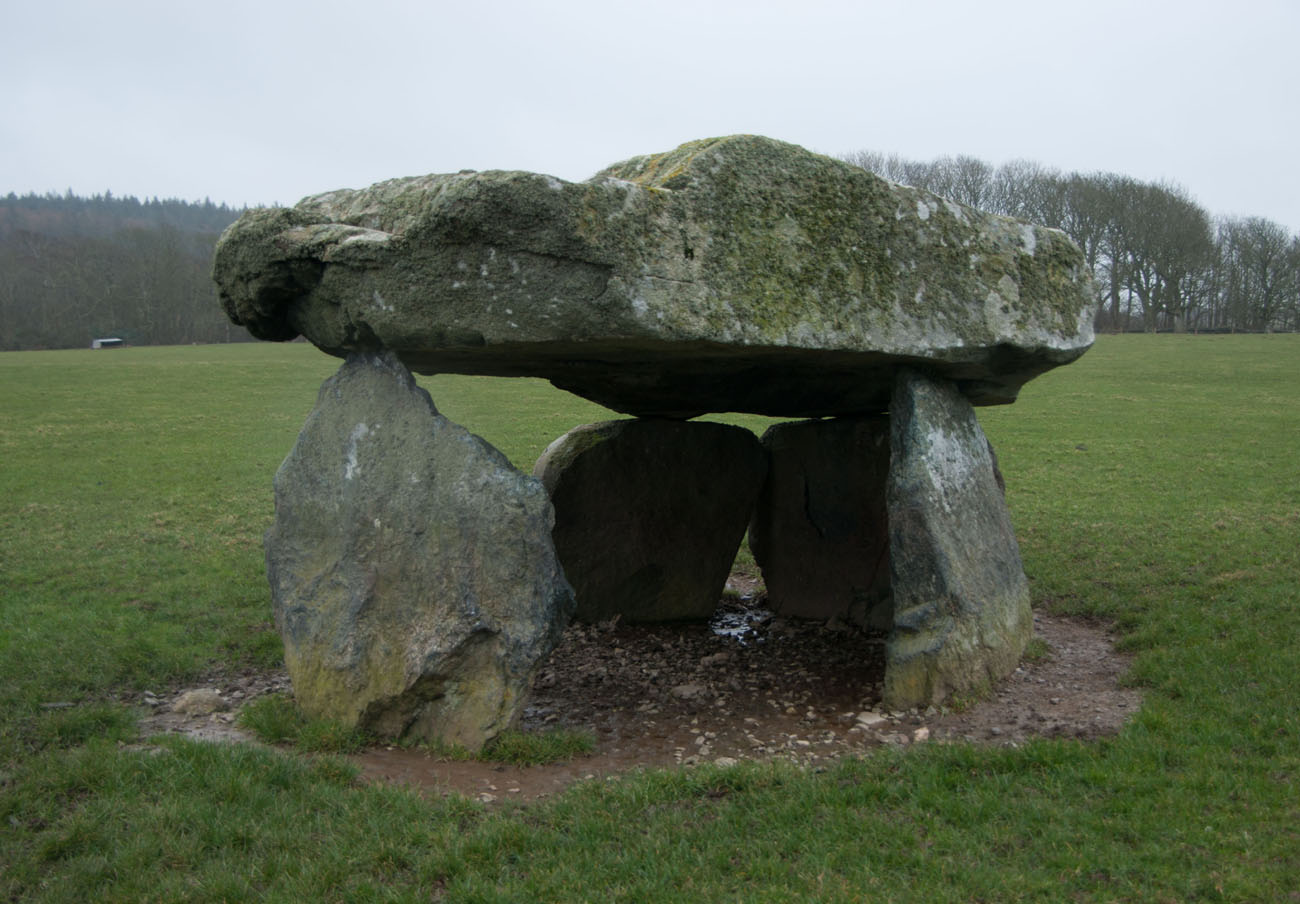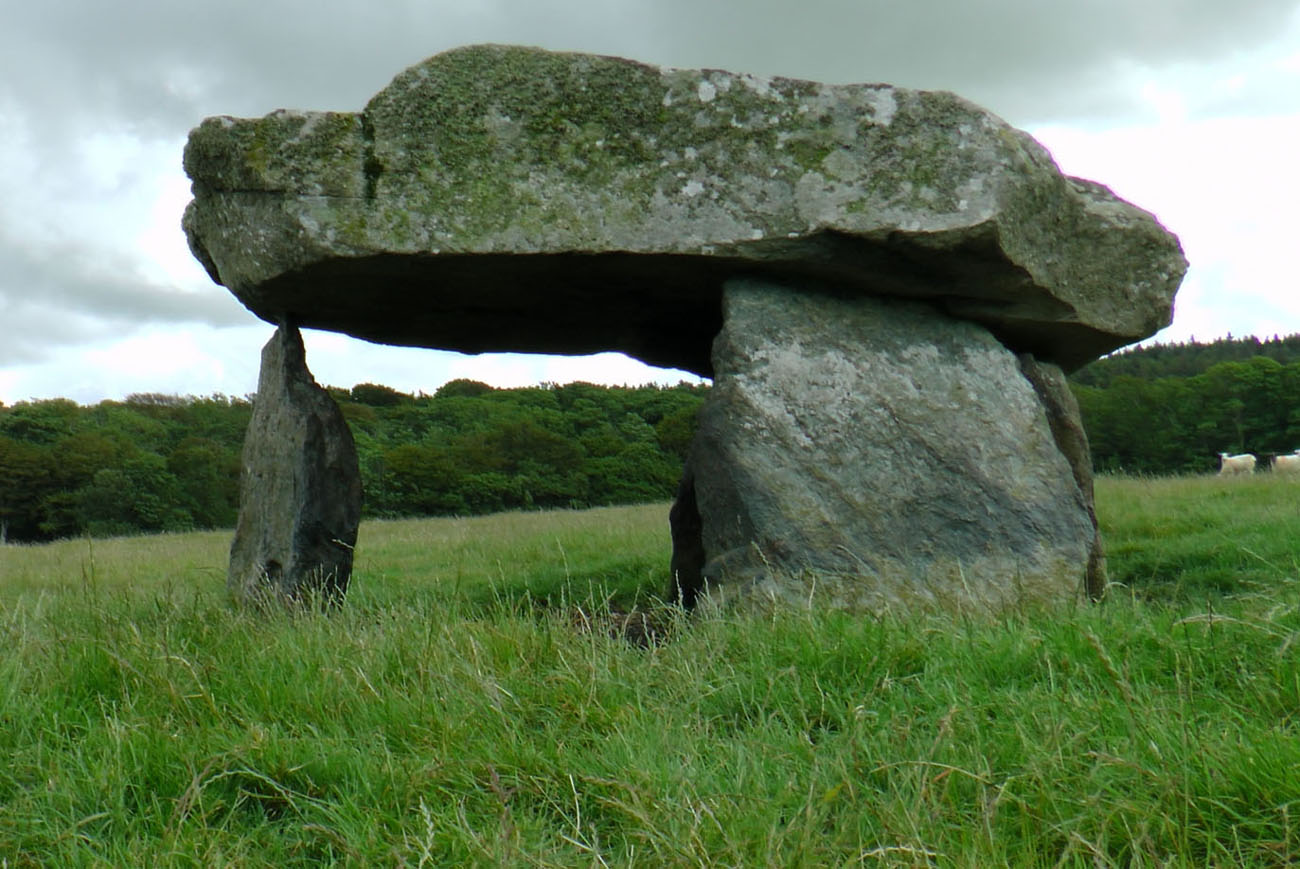History
The Presaddfed tomb was erected during the Neolithic period, around 4000-2000 BC. It served as a collective burial place of the early-agricultural community. The gradual transition from gathering and hunting to more settled agricultural life probably influenced the development of a sense of territoriality and rights to inheritance, and thus the desire to pay tribute to ancestors. A visible manifestation of this aspiration may have been monumental tombs, also used to carry out religious ceremonies in their vicinity. In the 18th century, when this place was first recorded, the burial chambers were already in ruins.
Architecture
The tomb consisted of two chambers slightly more than two meters apart, originally covered with a mound of earth or stones (cairn). It is uncertain whether the chambers were part of the same design. Descriptions from the mid-nineteenth century, however, state that at that time they were surrounded by a large number of small stones, which may indicate that both were once covered with one cairn.
The southern chamber was topped with a massive capstone measuring approximately 3.6 meters by 2.4 meters, supported by vertical stones on its long sides at the southern end, and one more slender stone in the north. The entrance was directed to the east.
The northern chamber was slightly smaller, consisting of at least two stones on the northern end and another two on the opposite side, that once supported the capstone. If we assume that it was a single structure with the southern chamber, the entrance to it was also on the eastern side.
Current state
Until now, only the remains of stone tomb chambers have survived, with no visible traces of the mound (cairn) covering them. The southern chamber is more complete, while the northern chamber has been significantly damaged over the centuries, with its ceiling stone collapsed and only two stones standing vertically.
bibliography:
Castleden R., Neolithic Britain: New Stone Age sites of England, Scotland and Wales, London 1992.
The Royal Commission on The Ancient and Historical Monuments and Constructions in Wales and Monmouthshire. An Inventory of the Ancient Monuments in Anglesey, London 1937.





